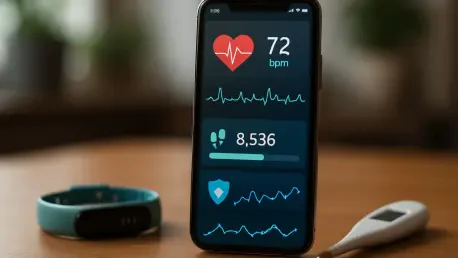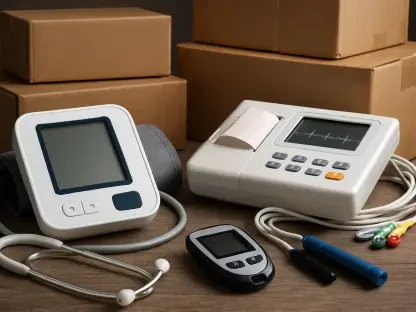For women over 50, navigating the complexities of aging often means facing new health challenges, such as disrupted sleep, hormonal changes during menopause, and a heightened risk of cardiovascular issues that can impact daily life. Wearable technology has become a powerful ally in addressing these concerns, providing real-time data to help monitor and improve critical aspects of well-being. These innovative devices offer insights into sleep patterns, heart health, and even stress levels, empowering women to make informed decisions about their lifestyle and medical needs. Unlike traditional healthcare, which may only provide periodic snapshots through doctor visits, wearables deliver continuous feedback, filling in the gaps with precision and personalization. This article explores the leading wearable devices tailored specifically for women in this age group, focusing on tools that enhance sleep quality and safeguard heart health. By highlighting expert-backed recommendations and practical benefits, the discussion aims to guide women toward solutions that align with their unique mid-life health priorities.
Why Wearables Are Essential for Mid-Life Wellness
As women age past 50, the physiological shifts tied to menopause and beyond can create a cascade of effects, from restless nights to increased strain on the heart due to declining estrogen levels. Wearable devices have emerged as vital tools in this landscape, acting as a bridge between sporadic medical checkups and the need for ongoing health awareness. These gadgets track essential metrics like heart rate variability, sleep duration, and even subtle body temperature changes that signal hormonal fluctuations. Such data provides a clearer picture of how daily habits influence overall wellness, allowing for adjustments in diet, exercise, or stress management before issues become severe. The ability to access this information at any time offers a sense of control, helping women address concerns proactively rather than reactively, and ensuring they remain attuned to their body’s evolving needs during this transformative stage.
Beyond just data collection, wearables bring a personalized approach to health management that resonates deeply with the challenges faced by women over 50. The insights gained from these devices can reveal patterns that might otherwise go unnoticed, such as how poor sleep correlates with heightened stress or irregular heart rhythms. This level of detail empowers users to take targeted actions, whether it’s adopting relaxation techniques or consulting a physician about concerning trends. Experts in the field, including renowned physicians, have highlighted the potential of wearables to act as an extension of traditional healthcare, offering a layer of precision that enhances routine medical advice. For women navigating the uncertainties of mid-life, these tools serve as a constant companion, providing reassurance and actionable steps to maintain vitality and prevent long-term health complications.
Enhancing Sleep with Cutting-Edge Devices
Sleep disturbances often become a significant hurdle for women over 50, driven by hormonal shifts that can lead to insomnia or frequent waking. Wearable technology offers a solution by delving into the nuances of rest, with devices like the Oura Ring Gen 3 excelling in this area. This subtle yet powerful tool monitors sleep stages, distinguishing between light, deep, and REM phases, while also tracking heart rate to gauge overall rest quality. By linking these metrics to hormonal changes common during menopause, it helps users understand why certain nights feel more restless than others. The actionable feedback provided, such as prompts to engage in calming activities before bed, can make a tangible difference in achieving consistent, restorative sleep, which is foundational to energy levels and emotional balance during the day.
Another dimension of sleep-focused wearables is their ability to integrate lifestyle recommendations based on collected data, ensuring a holistic approach to rest. For instance, beyond merely identifying disruptions, these devices often suggest personalized strategies like adjusting bedtime routines or reducing screen time to improve sleep hygiene. This tailored guidance is particularly valuable for women in mid-life, as it addresses the unique interplay between hormonal fluctuations and external stressors that often exacerbate sleep issues. The continuous monitoring also allows for tracking progress over time, so users can see how small changes lead to meaningful improvements. By prioritizing sleep as a pillar of health, these wearables help mitigate the ripple effects of poor rest, such as increased irritability or diminished focus, enabling women to approach each day with renewed vigor and clarity.
Safeguarding Heart Health with Smart Technology
Post-menopause, the risk of cardiovascular conditions rises sharply for women, making vigilant monitoring a critical priority. Wearables like the Apple Watch Series 9 have become indispensable in this regard, equipped with features to detect irregular heart rhythms that could signal potential problems. This device not only alerts users to anomalies but also integrates with health apps to facilitate seamless data sharing with medical professionals, ensuring timely interventions when needed. The emphasis on real-time tracking means that subtle changes in heart behavior, which might be missed during infrequent checkups, can be caught early, providing peace of mind and a proactive stance against one of the leading health risks for women over 50. Such technology transforms how heart health is managed, shifting the focus from reaction to prevention.
Equally important is the role these wearables play in fostering a deeper understanding of cardiovascular wellness through everyday activities. By monitoring heart rate variability during exercise, rest, or stress, devices offer insights into how different scenarios impact the heart’s performance, allowing users to adjust their routines accordingly. For example, noticing an elevated heart rate during periods of anxiety might prompt the adoption of mindfulness practices to lower stress. This continuous feedback loop empowers women to make informed choices that support long-term heart health, while also serving as a reminder of the importance of regular movement and balanced living. With expert endorsements underscoring the accuracy of these tools, they stand as reliable allies in navigating the increased vulnerabilities of mid-life, ensuring that heart health remains a manageable and prioritized aspect of daily life.
Addressing Menopause Symptoms Through Tailored Tracking
Menopause introduces a range of symptoms, from hot flashes to erratic sleep patterns, that can disrupt quality of life for women over 50, and wearables are stepping up to meet these specific challenges. Devices like the Garmin Venu 3S are designed with features to track body temperature changes indicative of hot flashes, while also offering insights into cycle irregularities even as periods become less predictable. These tools go beyond mere data collection by providing educational content and tips to manage symptoms, helping women feel more in tune with their bodies during this transition. The focus on menopause-specific metrics ensures that the physical and emotional toll of these changes is acknowledged and addressed, offering a sense of validation and support through technology that understands the intricacies of this life stage.
In addition to symptom tracking, these wearables encourage a comprehensive approach by linking menopause-related data with broader health goals like stress reduction and improved rest. The ability to see how hot flashes or mood swings correlate with sleep disruptions or elevated heart rates allows for a more nuanced understanding of how interconnected these factors are. Users can then experiment with strategies such as breathing exercises or dietary adjustments to alleviate discomfort, with the device providing feedback on what works best. This personalized feedback is invaluable, as it respects the diversity of experiences during menopause, ensuring that each woman can find a path to relief that suits her unique needs. By integrating such targeted support, wearables become more than gadgets; they evolve into essential partners in navigating the complexities of mid-life health with confidence and clarity.
Empowering Daily Health with Personalized Insights
The true strength of wearable technology lies in its capacity to transform complex health data into practical, everyday solutions for women over 50. Whether the primary concern is sleep, heart health, or managing menopause symptoms, these devices allow for a customized approach by focusing on individual priorities. A woman struggling with fatigue might opt for a wearable emphasizing sleep analytics, while another concerned about a family history of heart disease could choose one with robust cardiovascular monitoring. This flexibility ensures that health management feels less overwhelming and more achievable, as the technology adapts to specific goals rather than offering a one-size-fits-all solution. Backed by clinical insights from medical experts, these tools provide reliable guidance that enhances traditional healthcare practices.
Moreover, the empowerment derived from wearables extends to fostering a proactive mindset toward wellness in mid-life. The constant stream of data encourages users to take small, consistent steps—whether it’s tweaking sleep schedules or increasing physical activity—that accumulate into significant health benefits over time. This shift toward self-directed care is particularly impactful for women navigating the uncertainties of aging, as it instills a sense of agency over their bodies and futures. The ability to track progress and adjust strategies based on real-time feedback creates a dynamic health journey, where each day offers an opportunity for improvement. As these devices continue to evolve, they promise to remain vital companions, helping women sustain vitality and resilience through informed, intentional choices tailored to their unique needs.
Reflecting on Transformative Health Tools
Looking back, the integration of wearable technology into the lives of women over 50 marked a significant shift in how mid-life health challenges were approached. Devices tailored for sleep improvement and heart monitoring, such as the Oura Ring Gen 3 and Apple Watch Series 9, provided a level of insight that was previously inaccessible outside clinical settings. These tools not only highlighted issues like poor rest or irregular heart rhythms but also guided users toward meaningful lifestyle changes that made a lasting difference. The focus on personalized data helped countless women address the specific impacts of menopause and aging, turning abstract health concerns into manageable, daily actions. Moving forward, the next step lies in exploring how these wearables can further integrate with emerging medical technologies to offer even deeper preventive care, ensuring that women continue to benefit from advancements that prioritize their unique wellness journey.









